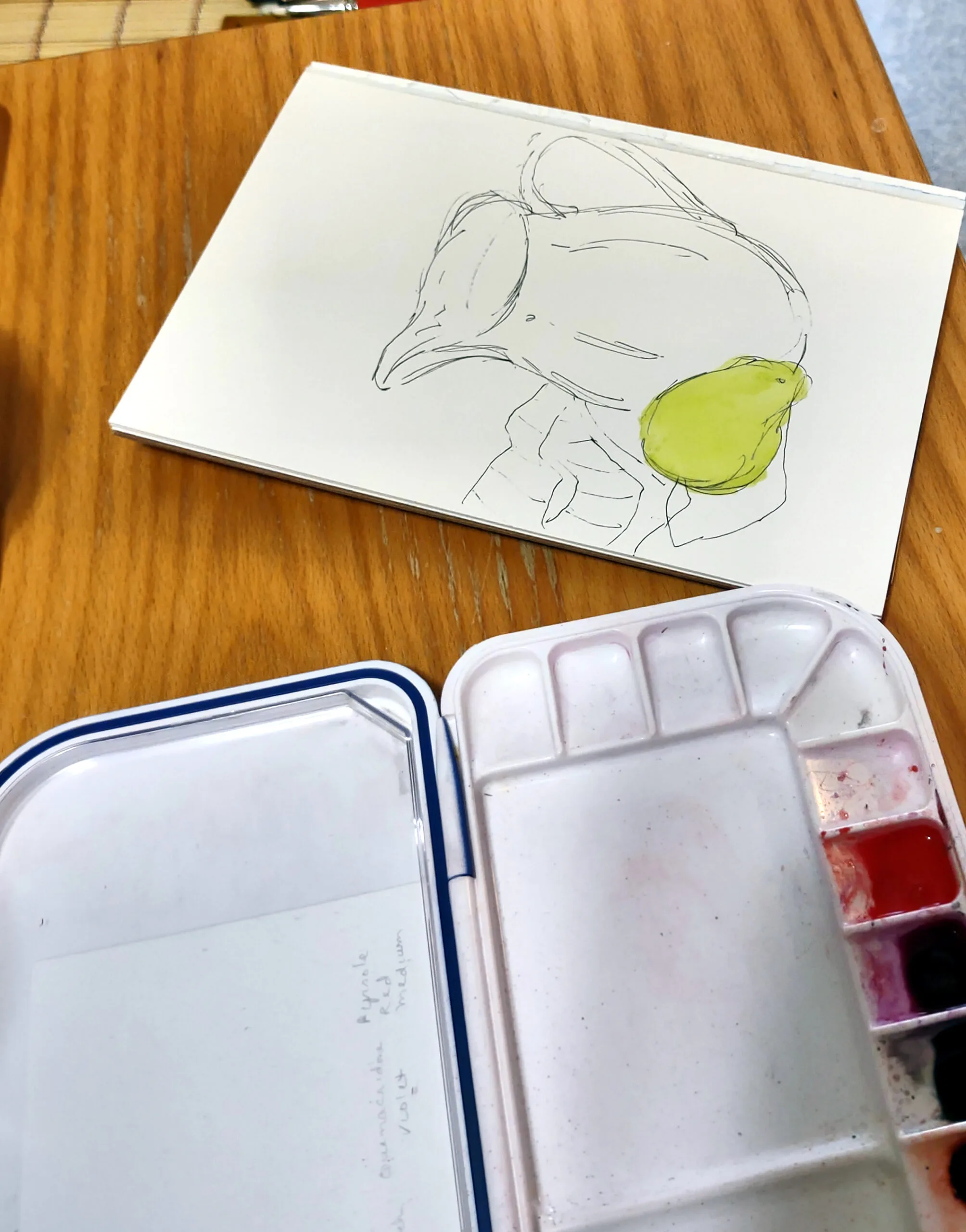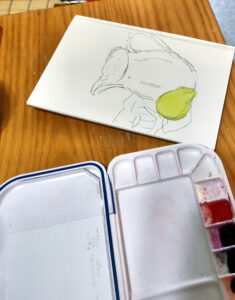
It’s a danger when you come to visit; I probably will make you work.
Watercolor painters have several options for transferring their sketch to paper. They can hope they get it right without guidelines at all. That has never worked for me; I’m far too impulsive.
Or, they can sketch in light pencil lines. Pencil can be very charming under watercolor, but make the marks too dark or numerous, and they’re jarring. Excess erasing will damage the surface of the paper. As soon as you’ve painted over pencil marks, they’re fixed in place forever.
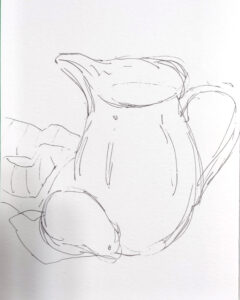
Another solution is to paint in guidelines with a very dilute solution of Neutral Tint and a tiny brush. This is a technique I learned from the late painter James Asher, and it works very well with his meticulous, carefully-realized style of painting. I’ve found it works better in controlled studio work than in loose plein air work, however.
My daughter Mary recently bought herself a Cricut machine and in the process of fiddling with it, learned about the Pilot FriXion pen. It comes in .7mm or .5mm and a variety of colors, and it erases with the heat given off by friction. For a watercolor artist, this has tremendous potential, if it means we can erase drawing lines using a hair dryer.
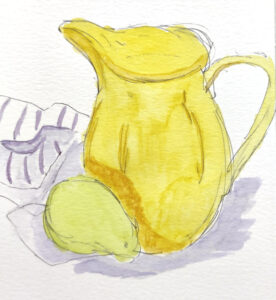
As I live in the deep woods, I was able to buy only a .7mm point; it was fine for my test, but I’d probably buy the finer point if given a choice. According to the package, the usable temperature range is 14-140° F.
My student Diane Fulkerson is visiting, so I asked her to test it for me. (I’m telling you the specific materials she used so that you, too, can do your own scientific tests). I gave her a sheet of Strathmore 400 watercolor paper. Starting with a quick drawing of a pitcher, a pear and a towel, she limned in the colors with QoR paints.
At this point the painting looked like a basic pen-and-wash exercise, and therein lies the danger of forgetting that these marks will completely disappear. When we hit it with the hairdryer, the marks really did vanish, leaving some lack of definition. “After the lines disappeared, I was left with just basic shapes,” said Diane. She then went back in and added shadows and a few details.
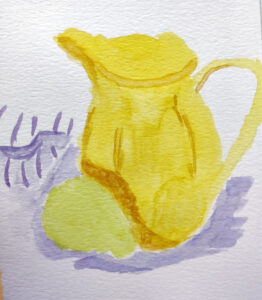
Will the lines reappear over time? I can’t say, but as an experiment, we tossed it in the freezer (around 0° F) for about two hours to see if the lines reappeared; they did, ever so slightly. Don’t store your finished artwork in your unheated north-woods cabin over winter and you should probably be okay.
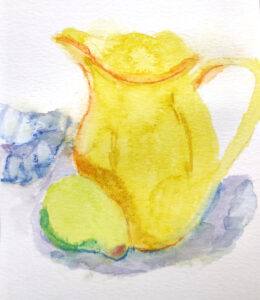
I bought a few more and I’m taking them and my hair dryer to Acadia to see how my Sea & Sky workshop students like working with them. If you try this, let me know what materials you used and how it worked.
“I thought it was cool,” said Diane, and I can’t disagree with her.

